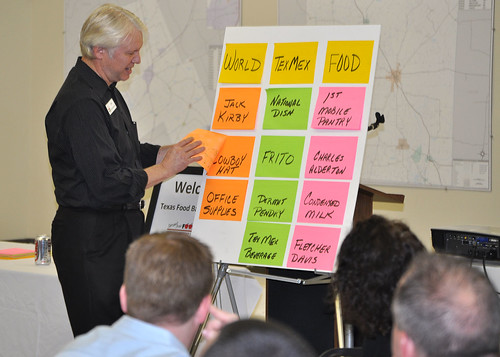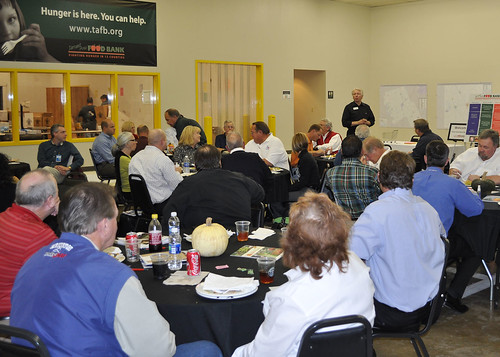I have been with the USDA for a little over six months, and have had bouts of excitement and nervousness that come with learning the ins and outs of featured programs like Women, Infants and Children Program (WIC), Supplemental Nutrition Assistance Program (SNAP) and other nutrition initiatives. It wasn’t until I sat down and researched the agency, that I understood the breadth of our program portfolio and their numerous benefits for millions of Americans. Fast forward a half year, and the complexities of becoming an effective hunger advocate are evident. Invited to attend the Tarrant Area Food Bank Partners Meeting in Fort Worth, Texas, my eyes opened to a much larger world.
The meeting started with some interesting Texas food banking history, and then moved toward the subject of donations. Currently, nutritious food donations are on a downward trend across the country. In response to this trend, efforts have focused on increasing shelf life of fresh produce with high priority on vegetables. Examples like using surplus vegetables to produce tomato sauce or salsa are some of the innovative ways aiding these efforts. Keeping the production of these foods “in house” also saves food banks money to be used for other more expensive items.
The creativity of those in the meeting was astounding, and the methods employed by food bank personnel to stretch their budgets left me at a loss for words. One example was how the Houston Food Bank solved a shortage on peanut butter. Since peanut butter is a healthy, high protein food with a long shelf life, it is a much needed commodity and highly requested item. By creating a partnership with a local church that owns a peanut butter cannery, the food bank was granted access to produce fresh peanut butter once a month. Only having to supply ingredients and containers, the need for a cost efficient way to get peanut butter was solved. One day of work at the cannery brings the food bank 12 to 13 pallets a month, normally costing thousands of dollars.
It is revolutionary ideas and partnership building practices like this that gets the job done.
I never realized how creative food banks must be to problem solve and stretch dollars. Attending the meeting gave me an intense appreciation for the supreme effort the employees and partners put into making sure people don’t go hungry. Thank you for all that you do!
Please follow USDA’s Food and Nutrition Service on Twitter.


